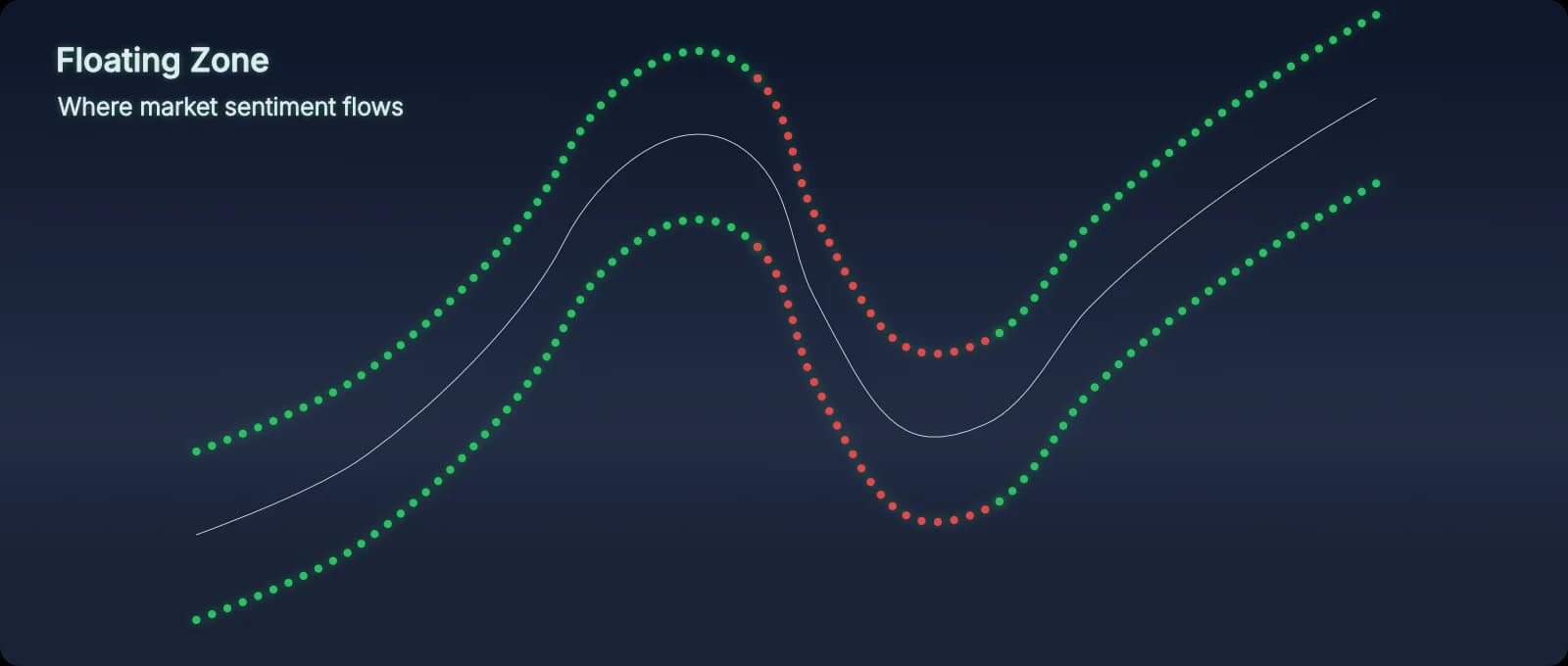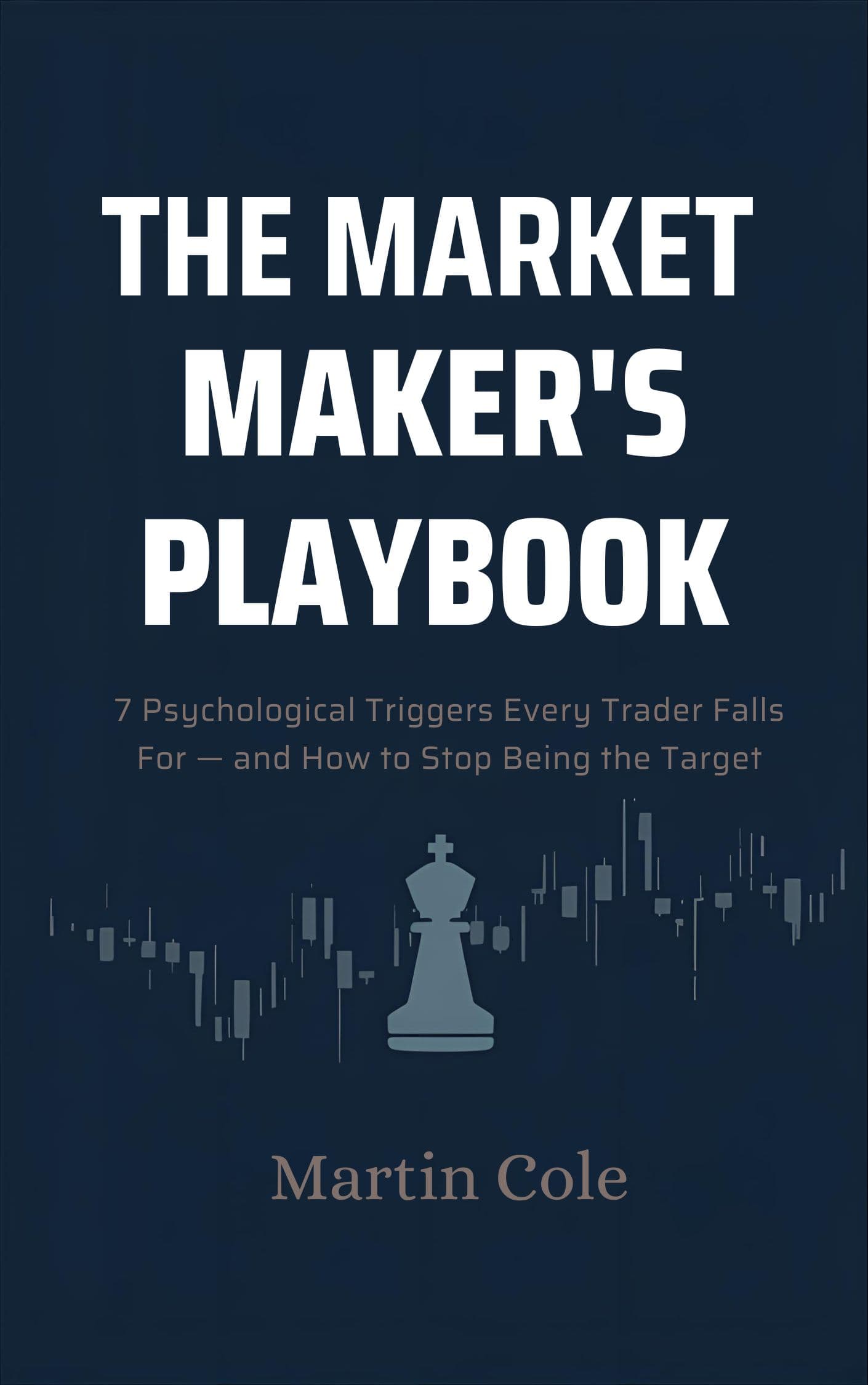Distribution (Profit Release) — The Expansion
Distribution—Martin's original term in 1999 was Profit Release—is when market makers release their accumulated profits. This is where the real move happens, the trend becomes obvious, and retail finally sees what professionals positioned for during accumulation.

What Is Distribution (Profit Release)?
Distribution is the third and final phase of the AMD cycle. After accumulation (positioning) and manipulation (testing/trapping), market makers release their accumulated inventory into the resulting price movement.
Why "Profit Release"? In 1999, Martin Cole's original term for this phase was Profit Release—because that's what it actually is: the release of accumulated profits that market makers manipulated themselves into getting. Others later simplified it to "distribution." We use both, but Profit Release captures what's actually happening.
During distribution (profit release):
- Price expands significantly. The real move happens. Trends become obvious.
- Retail traders finally enter. They see "confirmation" and pile in—just as professionals are exiting.
- Volume increases. The crowd is engaged. Momentum looks strong.
- Market makers are distributing inventory. They're selling (if long) or buying (if short) into the retail demand/supply they created.
Why This Matters
What Market Makers Are Doing
Distribution is when market makers close (or significantly reduce) the positions they accumulated. Here's what that looks like:
For a Long Move (Uptrend Distribution)
Market makers accumulated long positions during accumulation, tested belief during manipulation, and now they're distributing (selling) their inventory into the upward price movement.
How they distribute: As price rises, retail traders see "confirmation" and buy. Market makers sell to them at higher prices. The retail buy pressure absorbs the professional sell pressure, allowing market makers to exit profitably without crashing price immediately.
For a Short Move (Downtrend Distribution)
Market makers accumulated short positions during accumulation, tested belief during manipulation, and now they're distributing (buying back) their inventory into the downward price movement.
How they distribute: As price falls, retail traders panic and sell. Market makers buy from them at lower prices. The retail sell pressure provides the liquidity market makers need to close their short positions profitably.
The Pattern
Market makers build positions quietly (accumulation), test crowd belief and trap retail traders (manipulation), then release accumulated profits into the resulting move (distribution/profit release).
How to Identify Distribution
Distribution has clear characteristics once you know what to look for:
1. Obvious Trend After Quiet Period
After accumulation (quiet range) and manipulation (stop hunts/tests), price begins moving directionally with conviction. The trend looks "obvious" to retail traders—that's by design. Professionals need retail belief to distribute into.
2. Increased Retail Participation
Volume increases. Social media buzz grows. News coverage begins. Retail traders are engaged. This is exactly when professionals are exiting.
3. Momentum "Confirmation"
Technical indicators confirm the trend. Moving averages align. Oscillators show strength. Retail sees "all systems go"—and enters just as professionals distribute.
4. Whale Markers Appear on PAT
When Whale Markers trigger after accumulation and manipulation, distribution (profit release) is beginning. You're seeing the signal professionals use to time their exits.
How PAT Shows Distribution (Profit Release)
Whale Markers trigger or signal when profit release begins. When Whale Markers appear after The Floating Zone showed accumulation and Buffers confirmed manipulation, you're seeing the distribution phase start.
What to Watch For
- Whale Markers appear after manipulation completes. Once Buffer tests resolve and The Floating Zone confirms direction, watch for Whale Markers signaling distribution.
- Price expands with conviction. Distribution isn't choppy. It's directional, trending, "obvious." That's when professionals are releasing profits into retail demand.
- The Floating Zone remains strong during early distribution. In early distribution, The Floating Zone supports the move. Later, as professionals exit, The Floating Zone begins to weaken.
Trading Distribution with PAT
Here's how to use distribution signals in your trading:
Enter on Distribution Confirmation, Not Hope
Don't enter during accumulation (too early, no confirmation) or manipulation (traps everywhere). Enter when Whale Markers confirm distribution is beginning. This is the high-probability window.
Ride Distribution, But Watch for Exhaustion
Distribution can last for extended moves. Don't exit at the first sign of profit. But watch The Floating Zone. When it begins weakening while price still trends, distribution is nearing completion. Professionals are done. Time to exit.
Don't Hold Through Distribution Completion
The most costly retail mistake: holding through distribution into the reversal. When The Floating Zone weakens, price makes new highs/lows but momentum diverges, and volume patterns change—these signal distribution completion. Exit with professionals, not after them.
Watch for New Accumulation Forming
After distribution completes, price may enter a new accumulation phase. The cycle repeats. Don't try to catch the exact top/bottom. Let the new accumulation form, watch for manipulation, then position for the next distribution.
Why "Profit Release" Is the Better Term
When Martin Cole created the AMD framework in 1999, he called this phase Profit Release. Others later changed it to "distribution." Here's why the original term is more accurate:
- "Profit Release" describes the action. Market makers are releasing the profits they accumulated during the first phase.
- "Distribution" is generic. It could mean many things. Profit Release is specific: professionals are distributing their accumulated inventory at a profit.
- "Profit Release" captures the cycle. Accumulate (build), Manipulate (test/trap), Release (profit). The narrative is clear.
- "Profit Release" differentiates from markup. Some traders confuse distribution with markup (the expansion phase). Profit Release clarifies: this is where professionals exit profitably.
Common Mistakes Retail Traders Make
- Entering too late. They wait for "confirmation" (distribution is obvious), enter near the top, then ride it back down as distribution completes.
- Holding through distribution completion. They see price making new highs and assume "trend continues." Professionals are exiting. They hold through the reversal.
- Chasing momentum during late distribution. Price makes a "final push" (professionals distributing last inventory), retail FOMO-enters, then gets trapped as the move reverses.
- Ignoring divergences. Price makes new highs but volume decreases, The Floating Zone weakens, momentum slows. These signal distribution ending. Retail ignores them and holds.
The Complete AMD Cycle
Distribution (Profit Release) completes the AMD cycle. After distribution exhausts, the market either:
- Enters a new accumulation phase (for the next directional move)
- Reverses into a new cycle (accumulation in the opposite direction)
- Consolidates (range-bound period before the next cycle begins)
Understanding the complete cycle—Accumulation → Manipulation → Distribution (Profit Release)—gives you the context professionals use. You see what's coming, not just what's happening.
Learn More About the AMD Cycle
Distribution (Profit Release) is the third phase of the AMD cycle. To understand the complete framework, explore:
- What Is the AMD Indicator? — Complete AMD framework explanation
- The Manual — Complete walkthrough with chart examples
- The Floating Zone — How to spot distribution exhaustion
Continue your path

Free Download: The Market Maker's Playbook
Learn the 7 psychological triggers market makers use to trap retail traders—and how to stop being the target.
Free instant download. No spam, ever.